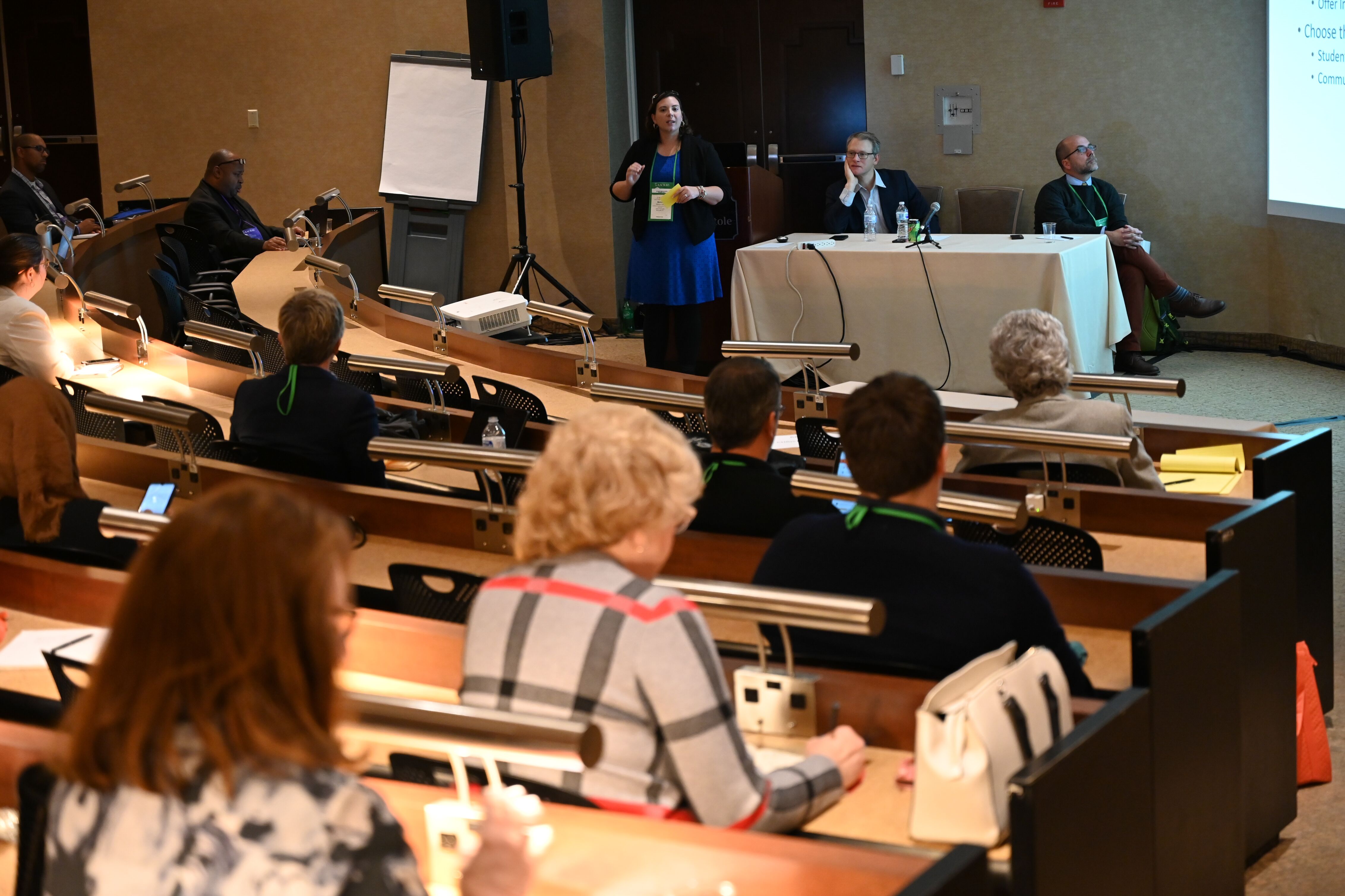
by Pamela Horne, Senior Consultant, AACRAO Consulting
Before the AACRAO SEM Conference in 2018, SUNY Morrisville faced declining enrollment, sub-par retention and graduation rates, little understanding of the competitive marketplace, and a paucity of data about their students.
Fortunately, a group of academic leaders, EM staff and faculty decided that sending a large team to AACRAO SEM might turn things around. To save resources, the team drove from upstate New York to D.C. in a minivan, subsequently experienced a flat tire that was fixed by group effort, and bonded through their hours on the road to DC and back.
They also took full advantage of all that the AACRAO SEM Conference had to offer – workshops and sessions and team meetings and coaching.
What a difference a year makes
The group that traveled to D.C. formed the core of an executive SEM campus team and set about making changes. Just a year later, the team has accomplished and learned enough to share with conference participants “Practical Ways to Enhance SEM Participation.”
This session told their story of the past year and provided many practical tips for institutions that are embarking on creating a campus-wide SEM culture. Here are six.
1. Buy-in. First, it’s important to start at the top and get support from the executive officers of the University.
2. Assessment. The next step is to create a sense of urgency by “gently” raising a mirror to faculty and staff.
3. Context and communication. Morrisville also learned that framing the narrative differently for different audiences was important.
4. Analytics. Data, data and more data about the institution and its competitors is key. Metrics that compared high school preparation, retention and graduation rates, price, and cohort default rate with Morrisville’s chief competitors were especially compelling to the President’s cabinet — and easily understood by academic staff and faculty leaders.
5. Application. The SEM campus leaders were also careful to translate enrollment information into dollars, e.g. the value of a student retained in both financial and mission terms. They also often use the faculty on the executive SEM team to present to other faculty members.
6. Accessibility. Morrisville was also careful to explain SEM terms in practical English and avoid EM lingo and jargon (e.g. yield and melt), particularly as they rolled out and obtained buy-in for the early alert tool for student success.
Within the first year, over 90% of faculty were using the system. They leaned into any frustrations on the part of the faculty, addressing questions and complaints as well as explaining rationale along the way. Data are now being shared across campus regarding student choice (and reasons) in the admission process, retention and degree progress by program, and factors that might lead to attrition. Their next steps are to present the data in more user-friendly and visual ways to further gain understanding among faculty and academic and student affairs staff.
Dream big and visualize
The Morrisville SEM team realized that it was critical to put forth a positive and very clear vision of what enrollment success would look like for their campus. Painting a picture of a fully-engaged campus, more robust enrollment of new students, and increases persistence and graduation has led to their successful roadmap.
What a difference a long van ride, a great conference, and year can make!